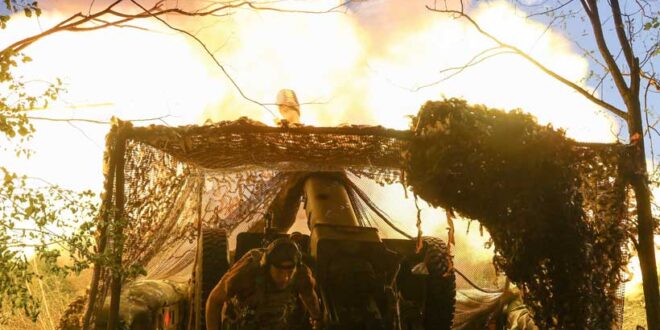ATHANASIOS G. PLATIAS
Wars Are Easy to Start—and harder to End
Starting a war is simple; ending one is far harder. The problem of war termination has long been neglected in both international relations theory and diplomatic practice. The assumption has always been that battlefield victory would automatically allow the winner to impose terms. But history rarely follows so linear a path. Only in exceptional cases—most notably the unconditional surrender of 1945—have wars ended neatly. Most conflicts require the far more complex art of translating military outcomes into political settlements, a skill mastered by very few statesmen.
The contrast between two German chancellors makes the point vividly. Otto von Bismarck understood when and how to end a war, consolidating Germany’s rise without overreaching. Adolf Hitler, by contrast, opened new fronts relentlessly—with catastrophic consequences.
Three and a half years into the war in Ukraine, neither side seems to have absorbed Bismarck’s lesson. It is now evident that Russia cannot conquer all of Ukraine, nor can Ukraine expel Russia from the territories it already occupies. Yet nothing in the current flurry of initiatives—whether from President Trump’s White House or from the recent burst of European diplomacy—suggests a credible path to peace.
The Battlefield Sets the Terms
Every negotiation begins from the facts on the ground. At present, those favor Moscow. Time, in a grinding war of attrition, rewards the side with greater manpower and resources. Russia already controls about 20 percent of Ukrainian territory and is still advancing, albeit slowly. That is why Moscow refuses cease-fire proposals that might allow Kyiv to regroup.
One might expect Ukraine—lacking any clear “theory of victory” and facing a worsening battlefield picture—to treat Trump’s initiatives as a lifeline, seizing the chance to secure peace while it still holds bargaining power. Yet Kyiv resists. Why?
The Shadows of History
For Ukraine, the nightmare is Yalta: a deal that consigns it once more to the Russian sphere of influence. Territorial concessions would not be the end of the story. Demands for neutrality, disarmament, and “de-Nazification” would hollow out sovereignty and independence. That is why Kyiv insists on NATO-style guarantees—effectively NATO membership by the back door. Moscow, which launched this war in large part to block Ukraine’s NATO ambitions, will never agree.
Europe, meanwhile, lives under a different ghost: Munich, 1938. Leaders fear that appeasing Vladimir Putin would only embolden him further. President Emmanuel Macron recently warned of a “predator at Europe’s gates,” echoing that fear. For many Europeans, any settlement that legitimizes Russian gains is unacceptable. Yet at the same time, Europe knows it cannot sustain Ukraine without American support. Hence the awkward genuflection before President Trump, accepting extreme demands to spend 5 percent of GDP on defense and to pay for American-supplied arms to Ukraine. Europeans cannot fight without Washington—and dare not fight in ways that risk direct war with nuclear-armed Russia.
Moscow, by contrast, has little incentive to hurry. The Kremlin bets that Ukraine, bled white by demographics and war fatigue, will eventually collapse, as Germany did in 1918 after four years of attrition. Russia therefore maintains a façade of diplomacy while tabling conditions it knows Kyiv cannot accept: regime change in Kyiv, sharp cuts to Ukraine’s military, a rupture with the West, recognition of Russian gains, and even territorial concessions beyond areas already occupied.
America’s Strategic Dilemma
The only player eager to end the war is Washington. The Trump administration has concluded that, despite the profits for America’s defense sector, the conflict now undermines long-term U.S. strategic interests. It drives Moscow ever deeper into Beijing’s embrace and risks pushing India in the same direction—especially after Washington’s clumsy decision to punish New Delhi with new tariffs under “secondary sanctions” for buying Russian energy.
The U.S. priority is to break the Moscow-Beijing axis, just as Henry Kissinger split China from the Soviet Union in 1971. From this perspective, the Ukraine war is a trap: it locks America into Europe in a conflict it cannot decisively win while distracting from the far greater challenge of China. Trump’s goal is either to broker peace or—more likely—to shift the entire burden of Ukraine onto Europe’s shoulders.
Is There a Way Out?
Any settlement must address three issues: territory, sovereignty, and independence. Finnish President Alexander Stubb has floated a striking analogy: Finland’s settlement with the Soviet Union in the 1940s. Then, Helsinki ceded approximately 10 percent of its territory, accepted neutrality, downsized its military, and outlawed its Nazi party. In return, it preserved some critical elements of its sovereignty and independence. Today, Finland is a prosperous democracy, a member of both the EU and NATO.
Could Ukraine pursue a similar “Finnish model”? In theory, Moscow and Washington might endorse such a compromise. In practice, Europe’s “coalition of the willing” and Ukraine’s own political elite would resist bitterly. For Kyiv, any “Finlandization” looks like surrender. For Europe, it looks like appeasement.
The Long Road Ahead
And so the war grinds on, with no credible endgame in sight. Russia waits for Ukraine to collapse. Ukraine dreams of NATO guarantees. Europe pleads for American protection. Washington eyes China and wonders why it is still bogged down in the Ukraine.
Bismarck knew when and how to close a war. Today, no one does. Unless that changes, Ukraine’s tragedy will remain an open wound at the heart of Europe—for years, perhaps decades, to come.
 Geostrategic Media Political Commentary, Analysis, Security, Defense
Geostrategic Media Political Commentary, Analysis, Security, Defense





